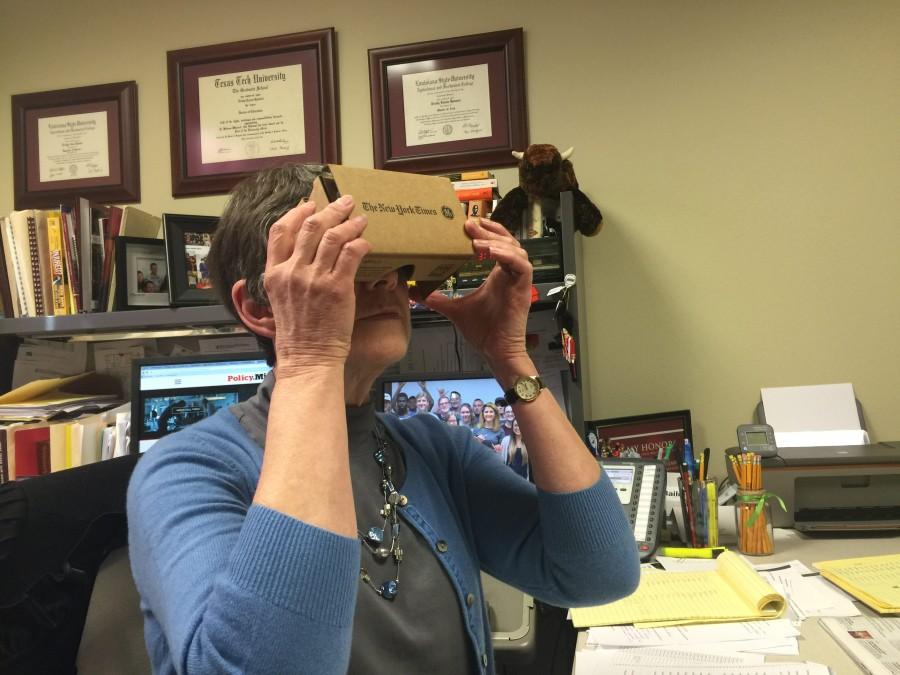Google Cardboard to Aid in Mass Comm Studies
Department of Communication Head, Dr. Trudy Hanson, demonstrates how to use Google Cardboard.
February 17, 2016
West Texas A&M University’s Mass Communications department recently invested in Google Cardboard to aid in various course curriculums.
While seemingly simple, Google Cardboard is proving itself to be anything but. With its ability to combine Virtual Reality (VR) with Augmented Reality (AR), Google Cardboard is allowing Mass Communication students the ability to see other parts of the world in person.
When asked what this could mean to students enrolled in these programs, Head of the Communication Department, Dr. Trudy Hanson said, “Google Cardboard allows you to see the news as it unfolds, away from the biases of mainstream media.” Dr. Hanson went on to say how this technology is allowing students to sit in a classroom while still getting the feeling of more hands-on education.
Drs. Butler Cain and Emily Kinsky, both assistant professors in the Mass Comm department, are the two that are spearheading the move to get this new Virtual Reality technology incorporated into Mass Communication curriculum.
“It’s really cool how the cardboard kind of puts you into a new place,” Kacie Marvin, freshman Speech Performance and Electronic Media major said, “It really gives you a new perspective on what it’s like in places you may have never physically been to. That new perspective really helps in our education in what’s going on in those places, something I feel is important in Mass Comm.”
But Mass Communications isn’t the only department where this technology can enhance the learning experience. “I believe that Google Cardboard has applications in both Mass Comm and Comm studies,” Dr. Hanson said. “In fact, I believe that almost every department at WT could find a practical use for it in a classroom setting.”
According to TechRadar.com Google Cardboard works by placing your phone in the box, away from the lenses. Then, by using certain apps for your phone, the lenses create a 3D effect when held up to your eyes. You can even move your head around, and the images will respond as if you’re in the same place. You can even move your head around, and the images will move in time with the movements of your head. For example, you can use the Street View demo and explore the streets of foreign cities such as Paris and Tokyo.
Google Cardboard was made to encourage businesses, investors, and educators to take a new look at affordable virtual reality technologies. “When I first saw this thing, I didn’t think it was worth anything. I mean, it’s just a cardboard box,” Dalton George, sophomore Political Science major said, “But when I put it on, suddenly I was in the Smithsonian looking at a dinosaur. I’ve never seen a fossil before, so it was an educational experience for me.” That’s what Google Cardboard was designed for; to give everyone an opportunity to experience the world in a new and unique way, and to give students a better way to learn.



